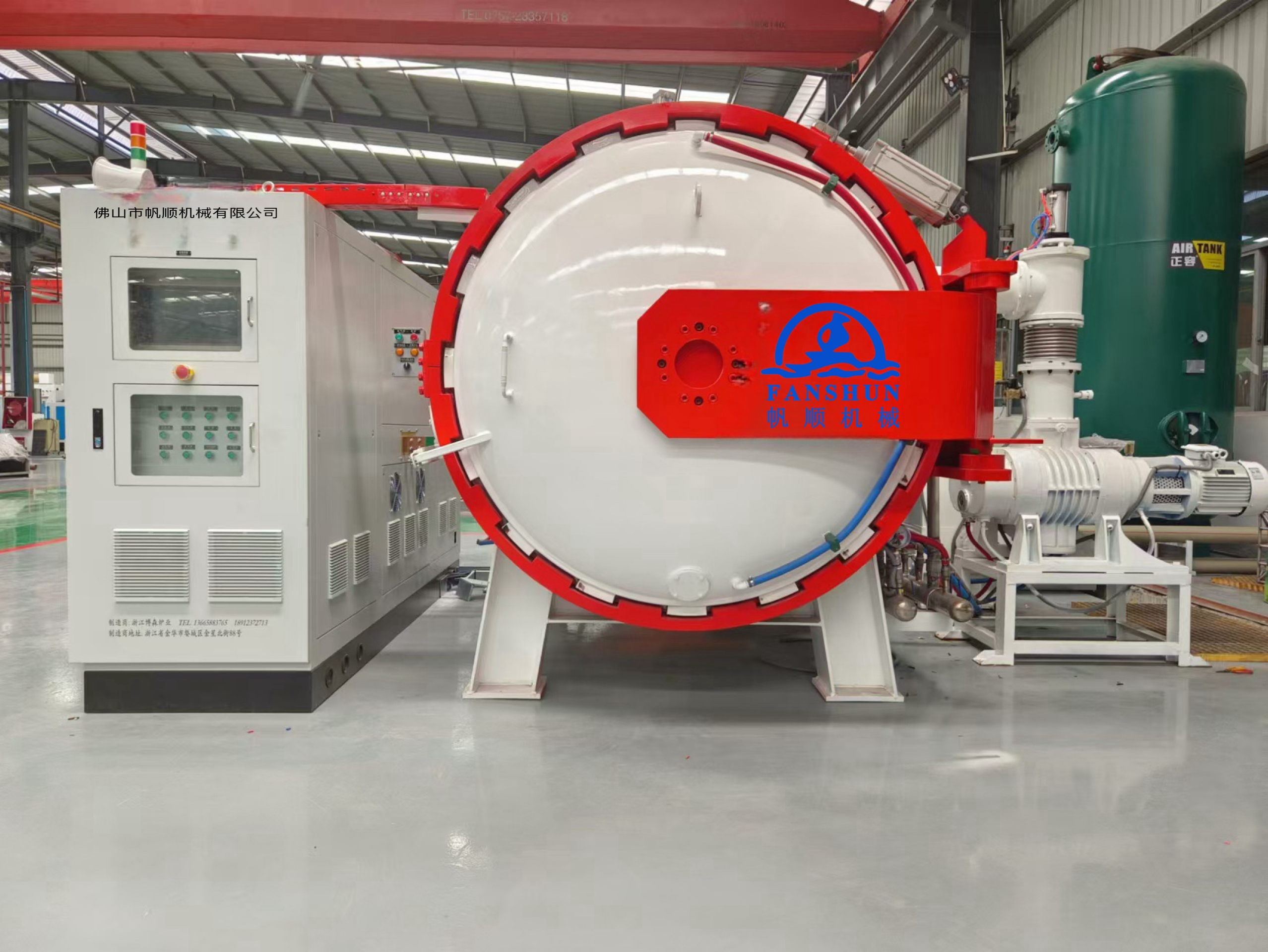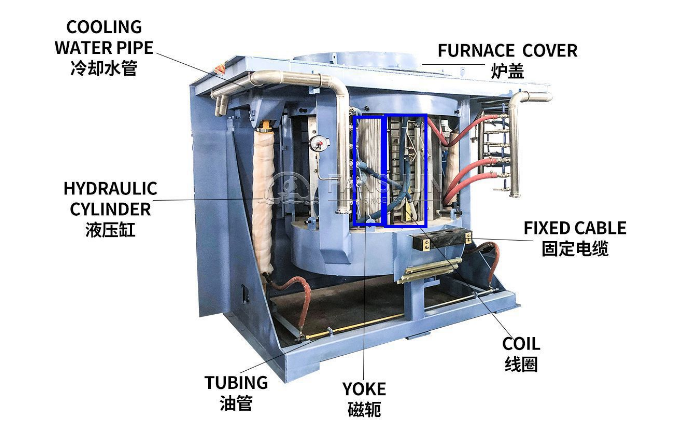The primary difference between a vacuum medium frequency induction furnace and a medium frequency induction furnace lies in the environment in which they operate and the applications they are suited for. While both furnaces use medium-frequency induction for heating metals, the vacuum medium frequency induction furnace incorporates a controlled atmospheric environment, which has distinct effects on the casting process and metal quality.
1. Vacuum Medium Frequency Induction Furnace
Key Features:
Vacuum Environment: Operates under a vacuum or controlled atmosphere (such as inert gases like argon). This prevents oxidation, gas absorption, and contamination during the melting process.
High Purity Metals: The vacuum environment ensures that impurities, oxygen, and other gases are removed from the metal, resulting in higher-purity castings.
Advanced Metal Alloys: Often used for melting and casting high-performance materials like superalloys, titanium, and aerospace-grade metals that require precise control of impurities.
Precise Control: Ideal for casting metals where the presence of gases (like oxygen, nitrogen, or hydrogen) could negatively affect the final product's mechanical properties, such as strength, corrosion resistance, and durability.
Advantages:
Prevents Oxidation: The vacuum or controlled atmosphere protects the molten metal from reacting with oxygen or other gases.
High Quality: Produces metals and alloys with superior mechanical properties due to the elimination of impurities.
Ideal for Exotic Alloys: Used in industries requiring the highest-quality materials with precise metallurgical properties.

2. Medium Frequency Induction Furnace
Key Features:
Ambient or Open-Air Operation: mediun frequency induction furnaces operate in normal atmospheric conditions without the use of a vacuum or controlled atmosphere. They are suitable for general-purpose melting and casting.
Medium-Frequency Heating: Like the vacuum medium frequency induction furnace, it uses electromagnetic induction to generate heat, typically in the range of 1–10 kHz. This offers efficient melting of metals and allows for uniform heating.
General Metal Melting: Best suited for metals and alloys that do not require high-purity environments, such as steel, copper, aluminum, brass, and other common alloys.
More Cost-Effective: Since it doesn’t require a vacuum system, it is more economical and widely used in standard foundry operations.
Applications:
Foundries: General-purpose melting and casting of metals like steel, copper, and aluminum.
Construction: For producing reinforcing bars, steel billets, and other standard metal products.
Metal Fabrication: Used for melting metals that are not highly sensitive to atmospheric contamination, like iron, brass, and aluminum alloys.
Advantages:
Affordable: More economical than avacuum medium frequency induction furnace due to the absence of vacuum pumps and control systems.
Versatile: Suitable for a wide range of metals, alloys, and melting processes that do not require strict control over the atmosphere.
Easy to Operate: Generally simpler to maintain and operate compared to vacuum systems, making it more accessible for general metalworking needs.

Key Differences
| Aspect | Vacuum Medium Frequency Induction Furnace | Medium Frequency Induction Furnace |
|---|---|---|
| Atmosphere | Operates in a vacuum or inert gas to prevent oxidation | Operates in ambient air, without atmospheric control |
| Application | High-purity metals, advanced alloys, aerospace, and medical | General metal melting and casting, construction, fabrication |
| Contamination Risk | Very low, as oxygen and impurities are removed | Higher risk of oxidation and contamination |
| Cost | Higher due to vacuum equipment and more complex systems | More cost-effective, no need for vacuum systems |
| Metal Quality | Superior metal quality with reduced impurities | Suitable for metals that do not require high purity |
| Complexity | More complex, requires specialized knowledge and maintenance | Simpler to operate and maintain |
| Use of Exotic Metals | Ideal for melting high-performance alloys and exotic metals | Not suitable for alloys that require a controlled atmosphere |
Conclusion
A vacuum medium frequency induction furnace is designed for high-precision, high-purity applications, typically involving metals that require strict control over environmental contaminants.
A medium frequency induction furnace is suitable for general melting and casting operations that do not require the same level of control over the atmosphere.
The choice between the two depends on the specific metal and alloy requirements, as well as the quality and cost considerations of the production process.

